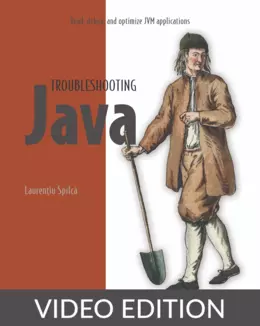Troubleshooting Java, Video Edition

Troubleshooting Java, Video Edition
English | MP4 | AVC 1280×720 | AAC 44KHz 2ch | 57 Lessons (7h 36m) | 1.16 GB
Effectively reading and understanding existing code is a developer’s superpower. In this video course, you’ll master techniques for code profiling, advanced debugging, and log evaluation to find and fix bugs and performance problems.
In Troubleshooting Java, Video Edition you will learn how to:
- Determine what code does the first time you see it
- Expose code logic problems
- Evaluate heap dumps to find memory leaks
- Monitor CPU consumption to optimize execution
- Use thread dumps to find and solve deadlocks
- Easily follow a service-oriented or microservices system
- Properly use logging to better understand Java app execution
- Use Java debuggers efficiently
Searching for bugs, detangling messy legacy code, or evaluating your codebase for new features sucks up much of a developer’s time. Troubleshooting Java: Read, debug, and optimize JVM applications teaches code investigation techniques that will help you efficiently understand how Java apps work, how to optimize them, and how to fix the bugs that break them. You’ll go from the basics of debugging to advanced methods for locating problems in microservices architectures, and save yourself hours or even days of time. Each new technique is explained with lively illustrations and engaging real-world examples.
Fact: Over the course of your career, you’ll spend far more time reading code than you will writing it. The code investigation skills in this video tutorial will radically improve your efficiency in understanding and improving Java applications.
Troubleshooting Java, Video Edition presents practical techniques for exploring and repairing unfamiliar code. In it, you’ll learn timesaving practices for discovering hidden dependencies, discovering the root causes of crashes, and interpreting unexpected results. Go beyond profiling and debugging and start understanding how Java applications really work.